Physical fitness is not just a buzzword but a way of life. It encompasses a multitude of elements, including cardiovascular health, muscular strength and endurance, flexibility, and body composition. Each of these facets plays a crucial role in our overall well-being. In this comprehensive guide, we will take a deep dive into the world of physical fitness, offering you insights, tips, and techniques to help you lead a healthier, more fulfilling life.
Table of Contents
17+ Powerful Ways of The Science of Physical Fitness: A Transformative Guide
Introduction
Understanding the Importance of Physical Fitness
Physical fitness is not merely about looking good; it’s about feeling good and functioning at your best. It’s a state of well-being that encompasses a healthy body and a sound mind. The importance of physical fitness cannot be overstated, as it affects every aspect of our lives. Whether you’re a student striving for academic success, a professional seeking to excel in your career, or a retiree looking to enjoy your golden years, physical fitness is the key to unlocking your full potential.
The Link Between Physical and Mental Health
Physical fitness and mental health are intricately connected. Regular exercise releases endorphins, the “feel-good” hormones that can alleviate symptoms of depression and anxiety. Additionally, physical activity promotes better sleep, reduced stress, and improved cognitive function. In this section, we’ll explore the profound relationship between physical and mental well-being, highlighting how a fit body leads to a fit mind.
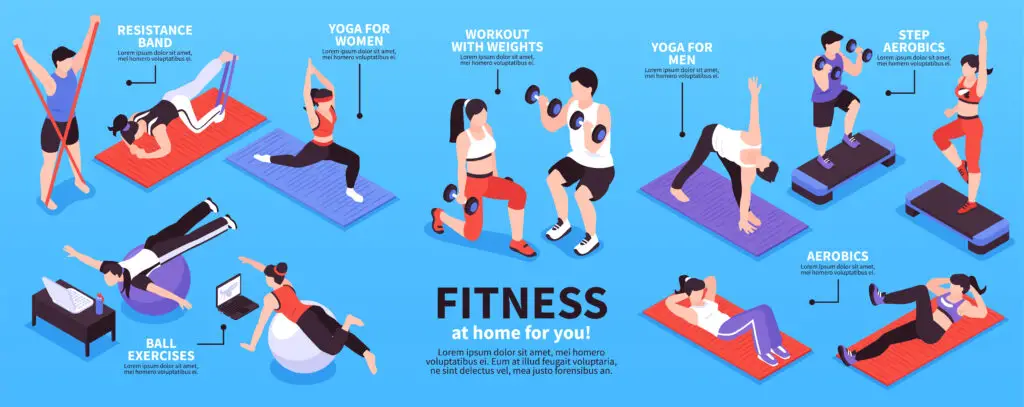
17+ Powerful Ways of The Science of Physical Fitness: A Transformative Guide
Cardiovascular Fitness
The Basics of Cardiovascular Fitness
Cardiovascular fitness, often referred to as cardiovascular endurance or cardiorespiratory fitness, is the ability of your heart, lungs, and blood vessels to supply oxygen to your muscles during sustained physical activity. It’s the foundation of all other forms of fitness and is vital for a healthy heart and a long life. This section provides a comprehensive understanding of what cardiovascular fitness entails and why it’s the cornerstone of physical well-being.
Cardio Workouts for a Healthy Heart
Maintaining cardiovascular fitness requires a consistent workout regimen. In this section, we’ll explore various cardio exercises, such as running, cycling, swimming, and aerobics. We’ll also discuss the ideal duration, intensity, and frequency of these workouts to keep your heart in prime condition.
Measuring Cardiovascular Fitness
How do you measure your cardiovascular fitness? We’ll introduce you to common methods like VO2 max testing, heart rate monitoring, and the talk test. You’ll learn how to track your progress and set goals for improving your cardiovascular health.
Muscular Strength and Endurance
Building Muscular Strength
Muscular strength refers to the capacity of your muscles to produce power or force. Whether you’re lifting weights, doing bodyweight exercises, or engaging in resistance training, building muscular strength is essential. This section will guide you through the process of developing strong, well-defined muscles.
Enhancing Muscular Endurance
Muscular endurance is your muscles’ ability to perform repetitive contractions over an extended period. We’ll delve into the importance of muscular endurance, how it differs from strength, and how to increase it through specific exercises and training techniques.
The Role of Resistance Training
Resistance training, also known as strength training, is a key component of muscular strength and endurance development. You’ll discover the benefits of resistance training, different methods, and how to structure your resistance workouts for maximum results.
Flexibility and Mobility
The Importance of Flexibility
Flexibility is often overlooked but is a critical aspect of physical fitness. In this section, you’ll learn how flexibility impacts your daily life, athletic performance, and injury prevention. We’ll also explore the science of flexibility and dispel common myths.
Techniques to Improve Flexibility
Whether you’re a beginner or an advanced athlete, there are various techniques and stretching exercises to enhance flexibility. We’ll provide a comprehensive list of stretches and flexibility routines to help you achieve greater mobility.
Mobility Exercises for Everyday Life
Mobility exercises go beyond flexibility and encompass functional movements that enhance your daily life. We’ll introduce you to mobility exercises that target specific muscle groups and joints, improving your overall physical capabilities.

17+ Powerful Ways of The Science of Physical Fitness: A Transformative Guide
Body Composition
Understanding Body Composition
Body composition refers to the proportion of fat and non-fat mass in your body. This section will explain the significance of body composition and how it affects your health, appearance, and athletic performance.
Achieving a Healthy Body Composition
If you’re looking to change your body composition by reducing fat or gaining muscle, this section is for you. We’ll discuss the strategies and dietary approaches to help you achieve a healthy and desirable body composition.
The Impact of Diet on Body Composition
Diet plays a vital role in shaping your body composition. We’ll explore the relationship between nutrition and body composition, offering practical tips for optimizing your diet to meet your fitness goals.
Nutrition for Physical Fitness
The Role of Nutrition in Fitness
Nutrition is the fuel that powers your physical fitness journey. In this section, we’ll delve into the role of macronutrients (carbohydrates, proteins, and fats) and micronutrients (vitamins and minerals) in maintaining your energy levels and promoting recovery.
The Importance of a Balanced Diet
A balanced diet is key to optimal physical performance and overall health. We’ll provide guidelines on creating a balanced meal plan that suits your fitness goals, whether it’s weight loss, muscle gain, or improved endurance.
Nutritional Supplements for Athletes
A lot of athletes and fitness enthusiasts rely on supplements to boost their performance. We’ll explore the most commonly used supplements, their benefits, and considerations for their safe and effective use.
Recovery and Rest
The Significance of Recovery
Rest and recovery are often underestimated aspects of physical fitness. This section highlights the importance of giving your body the time it needs to repair and grow. You’ll learn how rest can prevent overtraining and injuries.
Strategies for Post-Workout Recovery
To make the most of your workouts, post-exercise recovery is essential. We’ll discuss various recovery strategies, including nutrition, hydration, and stretching, to help you bounce back quickly and stronger.
The Role of Sleep in Physical Fitness
Sleep is the ultimate recovery tool. We’ll delve into the science of sleep, the benefits of a good night’s rest, and practical tips for improving your sleep quality.

17+ Powerful Ways of The Science of Physical Fitness: A Transformative Guide
Mental Health and Fitness
The Mind-Body Connection
Your mental state significantly impacts your physical fitness journey. This section explores the mind-body connection, emphasizing the role of a positive attitude, focus, and resilience in achieving your fitness goals.
Coping with Stress Through Exercise
Exercise is a powerful stress reliever. We’ll discuss how physical activity can help you manage stress, anxiety, and depression, and share stress-busting workout routines.
Psychological Benefits of Physical Fitness
Engaging in physical fitness doesn’t just benefit your body; it also has a positive impact on your mental well-being. We’ll uncover the psychological benefits, including boosted self-esteem, enhanced mood, and improved cognitive function.
Goal Setting and Tracking Progress
Setting Realistic Fitness Goals
Goal setting is a fundamental aspect of achieving success in physical fitness. We’ll guide you through the process of setting SMART (Specific, Measurable, Achievable, Relevant, and Time-bound) goals that will keep you motivated and on track.
The Value of Progress Tracking
To stay on course and see results, tracking your progress is essential. We’ll introduce you to various methods and tools for monitoring your fitness journey, from workout journals to fitness apps.
Celebrating Achievements Along the Way
Celebrate your victories, no matter how small. Recognizing and rewarding your accomplishments will keep you motivated and committed to your fitness routine.
Choosing the Right Exercise Routine
Tailoring Workouts to Individual Needs
One size doesn’t fit all when it comes to exercise. We’ll help you understand how to tailor your workouts to your specific goals and needs, whether you’re a beginner or an experienced athlete.
Popular Fitness Programs
Explore popular fitness programs such as CrossFit, HIIT, and yoga, and discover which one aligns with your fitness objectives and preferences.
Incorporating Variety into Your Routine
Variety is the spice of life, and it’s also the key to long-term fitness success. Learn how to keep your workouts exciting and effective by incorporating diverse exercises and activities.
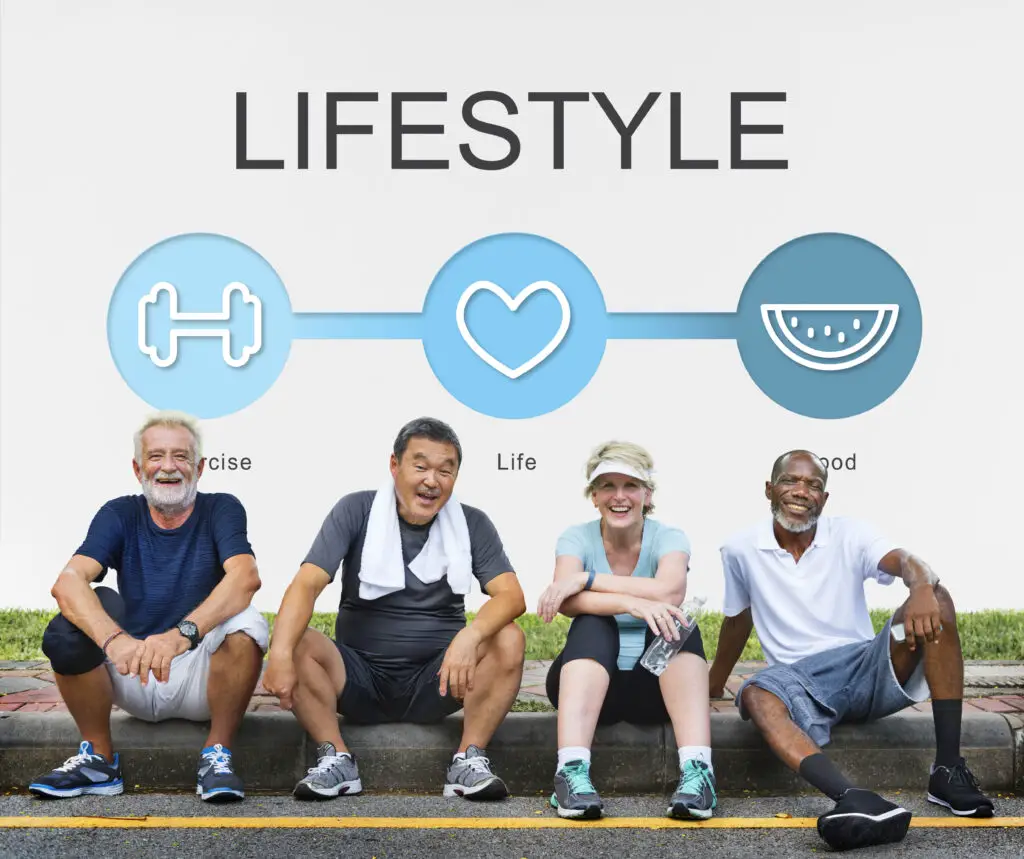
17+ Powerful Ways of The Science of Physical Fitness: A Transformative Guide
Fitness Equipment and Accessories
Home Gym Essentials
Creating a home gym is a convenient and effective way to maintain your fitness routine. We’ll list the essential equipment and accessories you need for a functional home gym.
The Benefits of Wearable Fitness Tech
Wearable fitness technology has revolutionized the way we monitor and improve our physical fitness. This section explores the benefits of fitness trackers, smartwatches, and other wearable devices.
Workout Apparel and Footwear
The right workout attire and footwear are essential for comfort and performance. We’ll guide you through selecting the best workout clothing and shoes for your activities.
Safety in Physical Fitness
Preventing Exercise-Related Injuries
Injuries can hinder your progress on your fitness path. We’ll provide valuable tips and precautions to prevent common exercise-related injuries, such as sprains, strains, and overuse injuries.
First Aid and Basic Injury Management
Accidents happen, even in the safest environments. We’ll equip you with essential first aid knowledge and basic injury management skills to address minor injuries.
When to Consult a Healthcare Professional
Knowing when to seek medical advice is crucial for your safety. We’ll outline the signs that indicate the need to consult a healthcare professional for more severe injuries or health concerns.
Physical Fitness for Different Age Groups
Fitness for Children and Adolescents
Physical fitness is essential for children and adolescents as it supports healthy growth and development. We’ll discuss age-appropriate exercises and activities for the young generation.
Adult Fitness and Aging
As we age, physical fitness becomes even more critical. This section addresses the unique fitness needs of adults and offers insights into aging gracefully while staying fit.
Fitness Considerations for Seniors
For seniors, maintaining physical fitness is key to independence and a high quality of life. We’ll explore safe and effective fitness routines tailored to the needs of older adults.
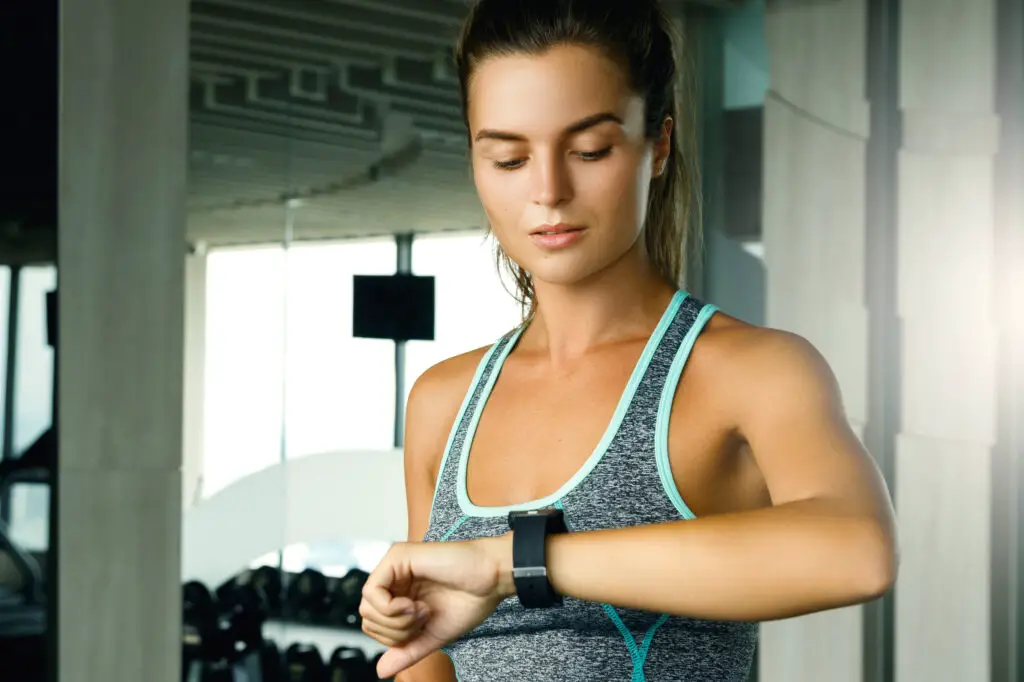
17+ Powerful Ways of The Science of Physical Fitness: A Transformative Guide
The Role of Technology in Fitness
Fitness Apps and Their Benefits
Fitness apps have become indispensable tools for tracking workouts, nutrition, and progress. Discover the top fitness apps and how they can elevate your fitness game.
Wearable Fitness Trackers
Wearable fitness trackers are your personal fitness companions. We’ll delve into the features and benefits of these devices, from heart rate monitoring to sleep tracking.
Virtual Fitness Classes and Training
The digital age has made it easier to access expert fitness instruction online. Learn how virtual fitness classes and personal trainers can help you achieve your goals.
The Social Aspect of Fitness
Group Exercise Classes and Their Appeal
Exercising with a group of people can be incredibly inspiring and encouraging. We’ll discuss the benefits of group exercise classes, from increased accountability to building social connections.
The Power of Workout Buddies
Partnering up with a workout companion can add enjoyment and increase the chances of success on your fitness journey. We’ll explore the advantages of partnering with a friend for your workouts.
Online Fitness Communities
The internet has brought people together from all corners of the globe, and fitness enthusiasts are no exception. Online fitness communities have gained immense popularity, serving as hubs for individuals to connect, share experiences, and support one another in their fitness journeys.
These communities can be found on social media platforms, forums, and dedicated fitness apps. They offer a multitude of benefits, including:
- Accountability: Online fitness communities provide a sense of accountability. When you commit to your fitness goals publicly, you’re more likely to stick to them. Fellow members can encourage and hold you responsible for your progress.
- Support and Motivation: Whether you’re overcoming a workout plateau, dealing with a temporary setback, or just needing a boost of motivation, these communities are there for you. You can share your successes and struggles, and others will be quick to offer advice and motivation.
- Sharing Knowledge: Many fitness enthusiasts in online communities are well-informed about various aspects of health and fitness. They willingly share their knowledge about exercise routines, nutrition, and supplements, helping you make informed decisions.
- Recipe and Meal Ideas: Finding the right balance between delicious and healthy meals can be a challenge. Online communities often share recipes and meal plans that align with your fitness goals, making it easier to maintain a balanced diet.
- Training Partners: If you’re looking for someone to work out with or an accountability partner, online fitness communities are excellent places to connect with potential training buddies. You can find someone with similar goals and interests to embark on your fitness journey together.
- Access to Experts: Some online fitness communities have certified trainers, nutritionists, or physiotherapists among their members. They can provide professional advice and guidance, ensuring that you’re on the right track to meet your fitness goals.
- Feedback and Evaluation: Sharing your progress in an online fitness community can lead to constructive feedback. Others can help you analyze your achievements and setbacks, offering valuable suggestions for improvement.
- Challenges and Competitions: Many communities organize fitness challenges and competitions, which can add an element of fun and excitement to your fitness routine. Participating in these events can be a great way to set new goals and stay engaged.
- Anonymous Support: Some individuals may feel more comfortable discussing their fitness journey anonymously. Online communities allow you to share your experiences without revealing your identity, making it easier to seek support.
To make the most of online fitness communities, consider the following tips:
- Choose the Right Community: Select communities that align with your fitness goals and interests. Whether you’re into weightlifting, yoga, running, or any other form of exercise, there’s likely a community tailored to your needs.
- Participate Actively: Engagement is key in these communities. Don’t just be a passive observer; actively participate by asking questions, sharing your experiences, and motivating others.
- Respect and Positivity: Maintain a respectful and positive attitude in online fitness communities. Remember that everyone is at a different point in their fitness journey, and your support can make a significant impact.
- Verify Information: While online communities are a valuable source of information, it’s essential to cross-check any advice or recommendations you receive, especially if it concerns your health and safety.
- Maintain Privacy: Protect your personal information and privacy. Be cautious about sharing any sensitive data with strangers in the community.
Online fitness communities are a testament to the power of the internet in bringing people together for a common cause. Whether you’re seeking motivation, knowledge, or companionship on your fitness journey, these digital networks have much to offer.
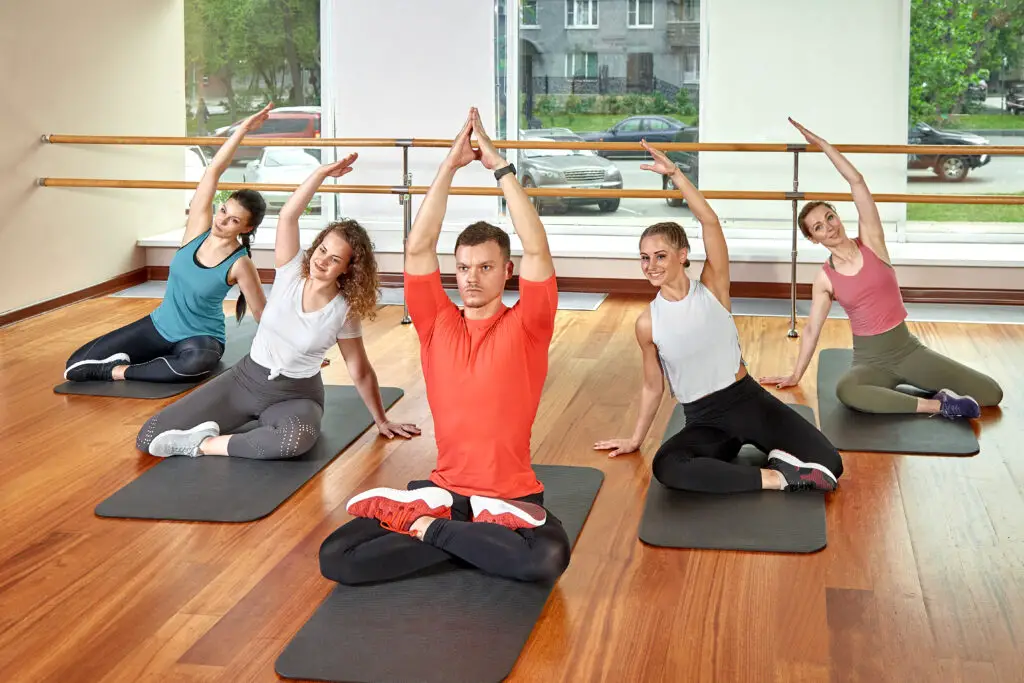
17+ Powerful Ways of The Science of Physical Fitness: A Transformative Guide
Sports and Recreational Activities
Finding Joy in Sports and Recreation
Physical fitness isn’t limited to monotonous gym workouts or repetitive exercises. Engaging in sports and recreational activities is an enjoyable way to stay fit. These activities not only promote physical health but also offer a sense of fulfillment and camaraderie.
Many sports and recreational activities can be tailored to your fitness level and interests. Some popular options include:
- Swimming: Swimming is a low-impact, full-body workout that enhances cardiovascular fitness, muscular strength, and endurance.
- Cycling: Whether it’s road cycling or mountain biking, cycling is an excellent way to explore the outdoors while building leg strength and endurance.
- Hiking: Hiking is an adventure that combines cardio fitness with the beauty of nature. Trails of varying difficulties cater to all fitness levels.
- Rock Climbing: Rock climbing challenges your strength and problem-solving abilities, making it an exciting workout for both the body and mind.
- Tennis and Racquet Sports: Tennis, badminton, and squash provide fast-paced, intense workouts that enhance agility, coordination, and cardiovascular health.
- Dancing: Dance is not only a fun and expressive form of exercise but also an excellent way to improve flexibility and balance.
- Martial Arts: Martial arts disciplines like karate, judo, and Brazilian jiu-jitsu offer physical fitness, self-defense skills, and mental discipline.
- Team Sports: Sports like soccer, basketball, and volleyball are social activities that boost cardiovascular fitness and teamwork.
- Golf: While golf may seem leisurely, walking the course and swinging the club offer exercise, especially when you skip the cart.
How to Get Started with a New Sport
If you’re new to a particular sport or recreational activity, here’s a step-by-step guide to get you started:
- Research: Begin by researching the sport or activity you’re interested in. Learn about the rules, equipment, and basic techniques.
- Find a Mentor or Coach: If possible, seek guidance from an experienced mentor or coach. They can teach you the fundamentals and help you progress faster.
- Gear Up: Acquire the necessary gear and equipment. Ensure that you invest in quality items that fit properly.
- Start Slow: Don’t rush into intense training. Begin with the basics and gradually increase the intensity of your workouts.
- Join a Group: Participating in group sessions or clubs can be a great way to meet like-minded individuals and share the experience.
- Set Goals: Define your goals and objectives for the sport. Setting specific targets will keep you motivated.
- Stay Consistent: Consistency is key to improvement. Regular practice and training are essential for mastering a new sport.
The Benefits of Sports for Physical Fitness
Participating in sports and recreational activities offers a host of benefits beyond physical fitness:
- Social Interaction: Team sports and group activities foster social connections and help combat feelings of isolation.
- Stress Relief: Physical activity in the form of sports can be a great stress reliever, allowing you to unwind and recharge.
- Improved Skills: Engaging in a sport hones your skills and can lead to a sense of accomplishment as you progress.
- Competition: Competition can be motivating, driving you to improve and surpass your limits.
- Enjoyment: Perhaps the most significant advantage is the sheer enjoyment you can derive from playing sports and indulging in recreational activities.
By embracing sports and recreation, you not only enhance your physical fitness but also add an element of fun and adventure to your fitness routine.
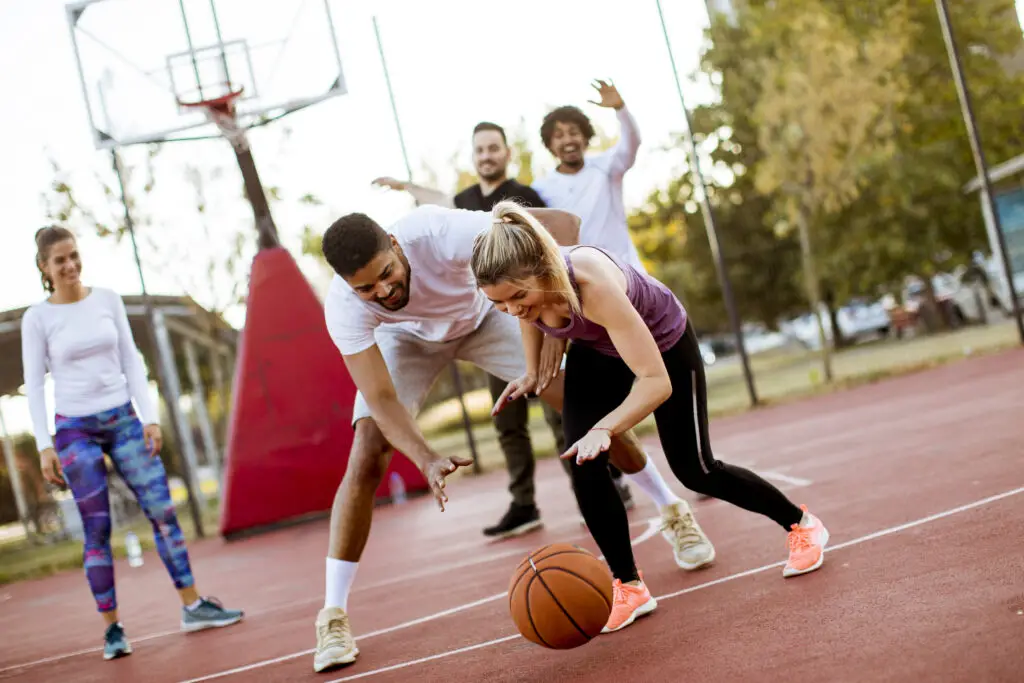
17+ Powerful Ways of The Science of Physical Fitness: A Transformative Guide
Physical Fitness and Weight Management
Weight Loss and Fitness
Weight management is a primary motivation for many individuals to engage in physical fitness. Whether you’re looking to shed a few pounds or embark on a substantial weight loss journey, physical activity plays a pivotal role in achieving your goals.
Weight loss through fitness involves a combination of factors, including:
- Caloric Deficit: Losing weight requires you to eat fewer calories than you burn through activity and daily living. Exercise helps create a caloric deficit by burning calories, aiding in weight loss.
- Muscle Building: Building muscle through strength training can boost your resting metabolic rate, allowing you to burn more calories even at rest.
- Improved Metabolism: Regular physical activity improves your metabolism, making it more efficient at utilizing energy from food.
- Appetite Control: Exercise can help regulate appetite, making it easier to adhere to a balanced diet.
- Stress Reduction: Lowering stress levels through exercise can prevent emotional eating and overconsumption of unhealthy foods.
- Sustainable Lifestyle: Integrating fitness into your daily routine promotes a sustainable, long-term approach to weight management.
Remember that a well-balanced diet is equally important in your weight management journey. Consult a nutritionist or dietitian to create a personalized meal plan that complements your fitness regimen.
Maintaining a Healthy Weight
Weight management isn’t just about losing weight; it’s also about maintaining a healthy weight in the long term. Fitness is instrumental in helping you sustain your weight and enjoy the many benefits of a healthy body. Here’s how to maintain a healthy weight:
- Consistent Exercise: Continue your regular exercise routine to prevent weight regain. A combination of cardio, strength training, and flexibility exercises is ideal.
- Balanced Diet: Maintain a balanced and nutrient-rich diet. Avoid fad diets and focus on consuming whole, unprocessed foods.
- Portion Control: Pay attention to the size of your portions to avoid eating too much. Use strategies like using smaller plates and listening to your body’s hunger cues.
- Regular Monitoring: Monitor your weight and body composition regularly. If you notice significant changes, adjust your exercise and diet accordingly.
- Stay Hydrated: Drinking an adequate amount of water can help control your appetite and support your metabolism.
- Sleep Well: Prioritize quality sleep, as it plays a crucial role in weight management. Strive for a good night’s sleep that lasts 7-9 hours.
Overcoming Weight Plateaus
Weight plateaus are common on the weight loss journey. When your progress stalls, it can be frustrating, but it’s not a reason to give up. Here’s how to break through plateaus:
- Change Your Routine: Alter your workout routine by introducing new exercises, increasing intensity, or trying different activities.
- Dietary Adjustments: Adjust your diet by reviewing your caloric intake and the types of foods you’re eating. Sometimes, small changes can reignite progress.
- Consult a Professional: If you’re struggling to break through a plateau, consider consulting a fitness trainer or nutritionist for personalized guidance.
Remember that weight management is a lifelong commitment. It’s about making choices that support your overall well-being and health rather than focusing solely on the number on the scale.

17+ Powerful Ways of The Science of Physical Fitness: A Transformative Guide
Fitness and Chronic Conditions
Managing Chronic Conditions Through Exercise
Physical fitness isn’t just for those looking to build muscle or lose weight. It also plays a critical role in managing and even preventing various chronic conditions. Regular exercise can improve the management of conditions such as:
- Cardiovascular Disease: Exercise is one of the most effective ways to reduce the risk of heart disease. It strengthens the heart, lowers blood pressure, and improves cholesterol levels.
- Diabetes: Physical activity helps regulate blood sugar levels and can prevent or manage type 2 diabetes. It enhances insulin sensitivity, allowing cells to use glucose more effectively.
- Arthritis: Exercise can relieve joint pain and stiffness, improving mobility for individuals with arthritis. Low-impact activities like swimming and cycling are often recommended.
- Osteoporosis: Weight-bearing exercises can enhance bone density, reducing the risk of osteoporosis and fractures.
- Chronic Pain: Physical fitness can alleviate chronic pain conditions by strengthening muscles, improving posture, and increasing flexibility.
- Depression and Anxiety: Regular exercise releases endorphins, which can help alleviate symptoms of depression and anxiety. It also provides a sense of accomplishment and reduces stress.
- Cancer: Some studies suggest that exercise may reduce the risk of certain types of cancer and improve the quality of life during cancer treatment.
- Asthma: Cardiovascular fitness can enhance lung function and reduce the severity of asthma symptoms.
Consulting a Healthcare Provider
If you have a chronic condition and are considering starting an exercise program, it’s essential to consult your healthcare provider. They can provide guidance on the type and intensity of exercise that’s safe and beneficial for your condition. It’s crucial to tailor your fitness regimen to your specific needs and limitations.
Adaptive Workouts for Special Populations
For individuals with disabilities, adaptive workouts are tailored to address their unique requirements. Adaptive fitness programs can be designed for various populations, including those with:
- Mobility Impairments: People with mobility impairments may benefit from seated workouts, resistance band exercises, or aquatic therapy.
- Visual or Hearing Impairments: Specialized programs can accommodate individuals with visual or hearing impairments, incorporating sign language, tactile cues, and adaptive equipment.
- Neurological Conditions: Adaptive workouts can address conditions like Parkinson’s disease, multiple sclerosis, and stroke recovery, focusing on balance, coordination, and strength.
- Intellectual Disabilities: Fitness programs for individuals with intellectual disabilities may involve simple, easy-to-follow routines.
- Seniors: Tailored fitness routines for seniors emphasize safety and functionality, helping maintain their independence.
Adaptive fitness programs are essential for ensuring that everyone has the opportunity to experience the benefits of physical fitness, regardless of their abilities or limitations.

17+ Powerful Ways of The Science of Physical Fitness: A Transformative Guide
Physical Fitness and Motivation
Staying Motivated on Your Fitness Journey
Maintaining motivation on your fitness journey can be challenging. Whether you’re striving for weight loss, muscle gain, or overall health improvement, here are strategies to help you stay on track:
- Set Clear Goals: Define specific, achievable fitness goals. Having a clear target to aim for will keep you motivated.
- Create a Workout Schedule: Create a reliable exercise schedule. Planning when and where you’ll exercise can make it a part of your daily life.
- Track Your Progress: Utilize a fitness journal, an app, or a wearable device to keep track of your advancements. Seeing your achievements can be highly motivating.
- Reward Yourself: Celebrate your successes, no matter how small. Rewards can be a powerful incentive to keep going.
- Find a Workout Buddy: Exercising with a friend can make workouts more enjoyable and create a sense of accountability.
- Switch Things Up: Prevent boredom by trying new exercises and routines. Variety can keep your workouts interesting and challenging.
- Visualize Success: Create a mental image of your fitness goals. Visualizing your success can help you stay focused on your objectives.
- Join a Fitness Challenge: Participating in fitness challenges or events can provide a deadline and a competitive edge to your training.
- Stay Informed: Read fitness magazines, books, or blogs to stay informed about the latest trends and discoveries in the fitness world.
- Stay Intrinsic: While external motivators can be helpful, try to find intrinsic motivation within yourself. The desire to improve your health and wellness.
Overcoming Plateaus
Staying committed to your fitness journey and facing the inevitable plateaus is an important aspect of achieving your goals. Plateaus occur when your progress seems to stall, and it’s essential to recognize that they are a natural part of any fitness endeavor. Here’s how to overcome plateaus:
- Change Your Routine: One of the most effective ways to break through a plateau is by introducing variety into your routine. Try new exercises or modify your existing workouts. This can shock your muscles and stimulate growth.
- Increase Intensity: Gradually increasing the intensity of your workouts can help overcome plateaus. You can add more weight, perform more repetitions, or reduce rest periods between sets.
- Focus on Nutrition: Plateaus may be a sign that your diet needs adjustment. Ensure you are consuming enough protein, healthy fats, and complex carbohydrates to support your fitness goals.
- Rest and Recovery: Sometimes, pushing too hard without adequate rest can lead to plateaus. Ensure you’re getting enough sleep and allowing your muscles to recover properly.
- Consult a Trainer: A professional fitness trainer can evaluate your current routine and suggest modifications to help you break through plateaus.
- Set New Goals: Setting new, achievable fitness goals can rekindle your motivation and give you a clear direction for your workouts.
Remember that plateaus are a normal part of progress, and with patience and determination, you can overcome them and continue your fitness journey.
The Power of Intrinsic Motivation
Motivation is what fuels a successful fitness journey, driving you to achieve your goals. While external motivators like the desire to look good or fit into a particular dress can kickstart your fitness goals, intrinsic motivation is what sustains your commitment in the long run. Intrinsic motivation comes from within, and it’s rooted in a deep sense of personal fulfillment and purpose.
Understanding the significance of intrinsic motivation in physical fitness is key to maintaining a lifelong commitment to your well-being. Here’s why intrinsic motivation is so powerful:
- Sustainable Drive: External motivators can wane over time, and the desire for superficial rewards can lose its appeal. Intrinsic motivation, on the other hand, remains constant because it’s tied to your personal values and sense of purpose.
- Resilience: When faced with obstacles, setbacks, or plateaus, intrinsic motivation acts as a resilient force that propels you forward. You’re more likely to overcome challenges and persist through difficulties when your motivation is internally driven.
- Enjoyment and Engagement: Intrinsic motivation is closely linked to enjoyment and engagement in your fitness activities. When you find joy in the process of exercise and feel engaged in your workouts, you’re more likely to stick with your routine.
- Long-Term Success: Intrinsic motivation is associated with long-term success. It’s not just about achieving a short-term goal; it’s about integrating fitness into your lifestyle and making it a sustainable, lifelong practice.
- Autonomy: Intrinsic motivation allows you to have a sense of autonomy in your fitness choices. You’re not driven by external pressures or expectations but by your own decisions and preferences.
- Health-Focused: Intrinsic motivation often places a primary focus on health and well-being, which is a more enduring and meaningful goal than simply aesthetics.
To tap into your intrinsic motivation for physical fitness, take the time to reflect on your personal values, what truly matters to you, and how being fit and healthy aligns with your broader life goals. Setting goals that resonate with your core values can help you stay motivated and committed for the long haul.
Incorporating activities you genuinely enjoy, whether it’s dancing, hiking, or practicing yoga, can make your fitness journey more satisfying and sustainable. Surrounding yourself with a supportive community that shares your passion for fitness can also fuel your intrinsic motivation, as it provides a sense of belonging and purpose.
In conclusion, while external motivators can provide an initial spark, intrinsic motivation is the enduring flame that keeps your fitness journey alive. Cultivate and nurture this internal drive, and you’ll find that your pursuit of physical fitness is not just a goal but a deeply fulfilling and lifelong adventure.
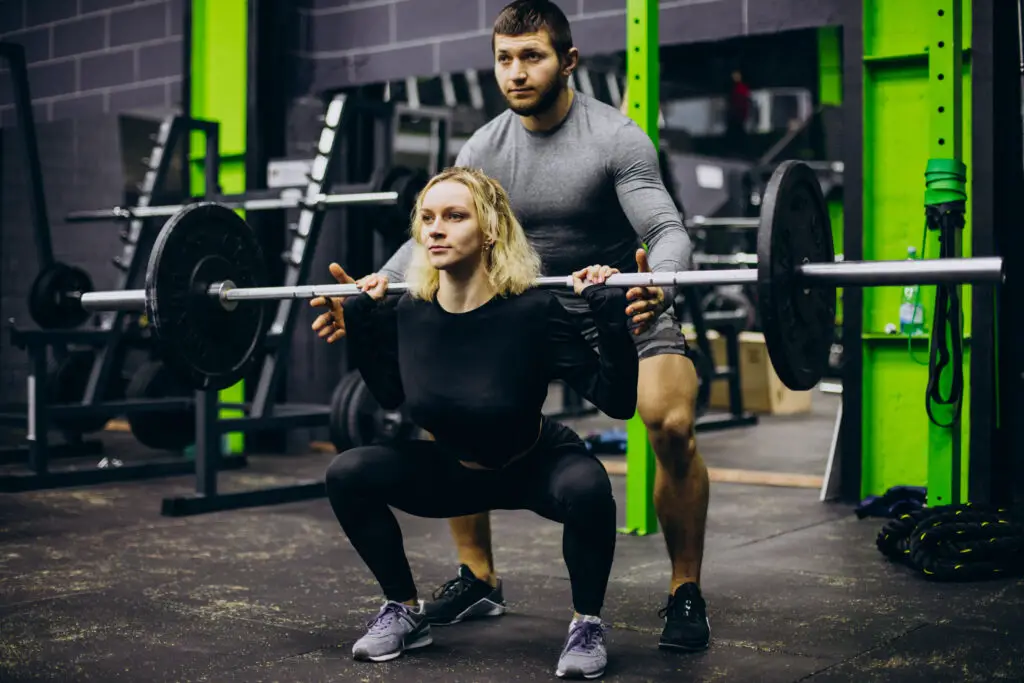
17+ Powerful Ways of The Science of Physical Fitness: A Transformative Guide
Choosing the Right Exercise Routine
Tailoring Workouts to Individual Needs
Choosing the right exercise routine is crucial to achieving your fitness goals. Every individual is unique, and your exercise plan should reflect your specific needs, interests, and limitations. Here are some factors to consider when customizing your workout routine:
- Fitness Goals: Define your fitness objectives clearly. Whether it’s weight loss, muscle gain, improved cardiovascular health, or overall well-being, your goals will shape your routine.
- Fitness Level: Your current fitness level plays a significant role in determining the intensity and complexity of your workouts. Beginners should start with manageable exercises, while experienced individuals can aim for more advanced routines.
- Health Conditions: If you have any medical conditions or injuries, consult with a healthcare provider before starting a new exercise routine. They can provide guidance on safe and suitable activities.
- Time Commitment: Consider how much time you can dedicate to exercise each day or week. This will determine the duration and frequency of your workouts.
- Personal Preferences: Choose exercises that you enjoy. If you find an activity enjoyable, you’re more likely to stick with it. Explore different options, from group fitness classes to solitary outdoor runs.
- Equipment and Facilities: Depending on your access to equipment and facilities, you may need to tailor your routine. Some exercises require a gym, while others can be done at home or outdoors.
- Variety: Incorporating a variety of exercises into your routine can prevent boredom and provide a well-rounded fitness experience.
Popular Fitness Programs
If you’re unsure where to start, there are several popular fitness programs designed to address specific goals and preferences. Here are a few well-known programs:
- CrossFit: CrossFit is a high-intensity, functional fitness program that combines weightlifting, cardio, and gymnastics. It focuses on building strength, endurance, and agility.
- High-Intensity Interval Training (HIIT): HIIT consists of brief, high-intensity exercise sessions followed by short rest periods. It’s known for its efficiency in burning calories and improving cardiovascular fitness.
- Yoga: Yoga is a mind-body practice that enhances flexibility, balance, and mental well-being. It comes in various styles, from the gentle Hatha to the vigorous Ashtanga.
- Pilates: Pilates emphasizes core strength, flexibility, and posture. It’s excellent for building a strong, lean body.
- Running Programs: Whether it’s a 5K, half-marathon, or marathon, running programs offer structured plans to help you achieve your running goals.
- Bodyweight Training: Bodyweight exercises, like push-ups, squats, and planks, require minimal equipment and provide a great workout.
- Dance Fitness: Dance fitness programs like Zumba or hip-hop dancing can make workouts enjoyable and help improve coordination.
- Swimming Workouts: Swimming is a full-body workout that’s easy on the joints, making it suitable for various fitness levels.
- Strength Training: Strength training routines focus on building muscle, improving bone density, and boosting metabolism.
- Functional Training: Functional fitness workouts mirror everyday movements and can improve your ability to perform daily tasks.
Incorporating Variety into Your Routine
Variety is not only the spice of life but also the key to long-term fitness success. Incorporating diverse exercises and activities into your routine provides several benefits:
- Prevents Boredom: Repeating the same workouts can become monotonous. Variety keeps your workouts interesting and engaging.
- Prevents Plateaus: Trying different exercises can prevent your body from adapting to a specific routine, thus helping you continue making progress.
- Balanced Development: A well-rounded fitness routine that includes cardio, strength training, and flexibility exercises ensures that you work all major muscle groups and maintain overall health.
- Reduces the Risk of Overuse Injuries: Performing a variety of exercises can reduce the risk of overuse injuries that may occur from repeatedly stressing the same muscles or joints.
- Enhances Motivation: Trying new activities can reignite your motivation and enthusiasm for fitness, especially if you’re feeling stuck in your current routine.
To keep your fitness journey exciting and effective, regularly switch up your workouts and explore different forms of exercise.
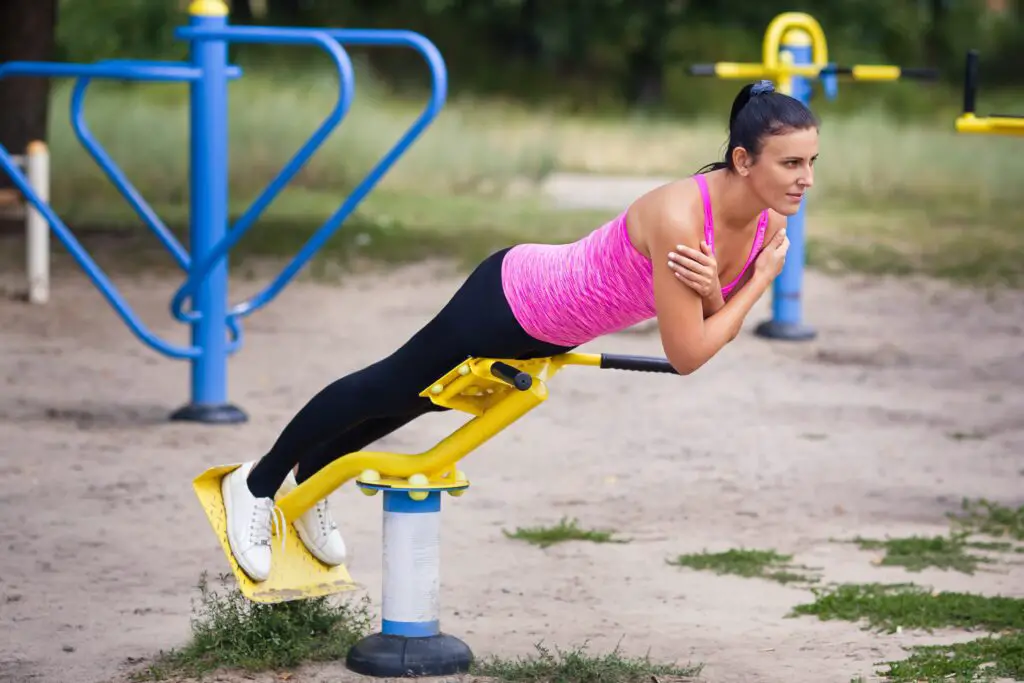
17+ Powerful Ways of The Science of Physical Fitness: A Transformative Guide
Fitness Equipment and Accessories
Home Gym Essentials
Building a home gym can be a convenient and cost-effective way to maintain your fitness routine, especially if you prefer to work out in the comfort of your own space. Here are some essential items to consider for your home gym:
- Exercise Mat: An exercise mat is versatile and essential for floor exercises, yoga, and stretching.
- Dumbbells or Kettlebells: These are excellent tools for strength training and can be used to target various muscle groups.
- Resistance Bands: Resistance bands provide an effective means of resistance training and are compact and portable.
- Jump Rope: A jump rope is a fantastic cardio tool that can help you achieve a quick and effective workout.
- Stability Ball: Stability balls are excellent for core strengthening and balance exercises.
- Pull-Up Bar: If you have a sturdy door frame, a pull-up bar can be a valuable addition for upper-body workouts.
- Cardio Machine: Depending on your space and budget, you may consider a treadmill, stationary bike, elliptical trainer, or rowing machine for cardiovascular fitness.
- Adjustable Bench: An adjustable bench is versatile for various strength-training exercises.
- Foam Roller: Foam rollers are beneficial for self-myofascial release, helping to alleviate muscle tension and soreness.
- Mirror: A full-length mirror can be useful for checking and maintaining proper form during exercises.
Setting up a home gym allows you to exercise at your convenience and personalize your workouts to your liking. Choose equipment that aligns with your fitness goals and available space.
The Benefits of Wearable Fitness Tech
Wearable fitness technology has revolutionized the way we monitor and improve our physical fitness. These devices, including fitness trackers, smartwatches, and other wearable gadgets, offer several benefits:
- Activity Tracking: Wearables can monitor your daily steps, distance traveled, and calories burned, providing you with a better understanding of your activity levels.
- Heart Rate Monitoring: Tracking your heart rate during exercise can help you optimize your workouts and ensure you’re in the right training zone.
- Sleep Tracking: Many wearables offer sleep-tracking features, helping you assess the quality and duration of your sleep.
- Calorie Counting: Wearables can estimate the number of calories burned during workouts and throughout the day, assisting with weight management.
- Goal Setting: Set specific fitness goals and let your wearable device help you track your progress.
- Motivation: Wearable tech provides real-time feedback, motivating you to stay active and reach your targets.
- GPS and Location Services: GPS-enabled devices can track your routes and distances, making them ideal for outdoor activities like running and cycling.
- App Integration: Many wearables sync with fitness apps, allowing you to analyze your data, set goals, and share achievements with friends.
- Health Monitoring: Some wearables include features for monitoring health metrics like blood pressure, oxygen saturation, and more.
- Convenience: Wearable devices are lightweight, comfortable, and easy to use, making them convenient for tracking your fitness anytime, anywhere.
- Community and Social Features: Many wearables allow you to connect with other users, join fitness challenges, and share your achievements on social networks.
Whether you’re a beginner or an experienced athlete, wearable fitness technology can enhance your fitness journey by providing valuable data, motivation, and convenience.
Workout Apparel and Footwear
Selecting the right workout attire and footwear is essential for comfort, performance, and injury prevention. Here’s how to choose the best workout clothing and shoes for your activities:
Choosing Workout Apparel:
- Moisture-Wicking Fabric: Opt for clothing made from moisture-wicking materials that keep sweat away from your skin, promoting comfort during workouts.
- Layering: Layer your clothing so you can adjust your attire as your body temperature changes during exercise.
- Supportive Sports Bras: For women, investing in a high-quality, supportive sports bra is crucial for comfort and breast health during exercise.
- Comfortable Fit: Your workout attire should fit well but not be too tight or restrictive. Ensure freedom of movement for your chosen activities.
- Protection from the Elements: Depending on your location and exercise preferences, consider clothing that offers protection from the sun, cold, or rain.
- Reflective Elements: If you exercise outdoors, choose clothing with reflective elements to enhance visibility, especially in low-light conditions.
Selecting Workout Footwear:
- Proper Fit: Ensure your workout shoes fit comfortably with enough room for your toes. Get your feet measured regularly to accommodate changes in size.
- Activity-Specific Shoes: Select footwear designed for your chosen activities. Running shoes, for example, are different from cross-training or weightlifting shoes.
- Cushioning and Support: Look for shoes with adequate cushioning and arch support tailored to your foot’s shape and needs.
- Breathability: Shoes with breathable materials help keep your feet cool and dry during workouts.
- Traction: The outsole should provide sufficient traction for the type of surfaces you’ll be exercising on, whether it’s the gym floor, trails, or pavement.
- Replace When Worn: As workout shoes wear down, their support and cushioning diminish. Replace your workout shoes when you see clear signs of excessive wear and tear.
Choosing the right workout clothing and footwear can improve your performance, reduce the risk of injury, and enhance your overall exercise experience.
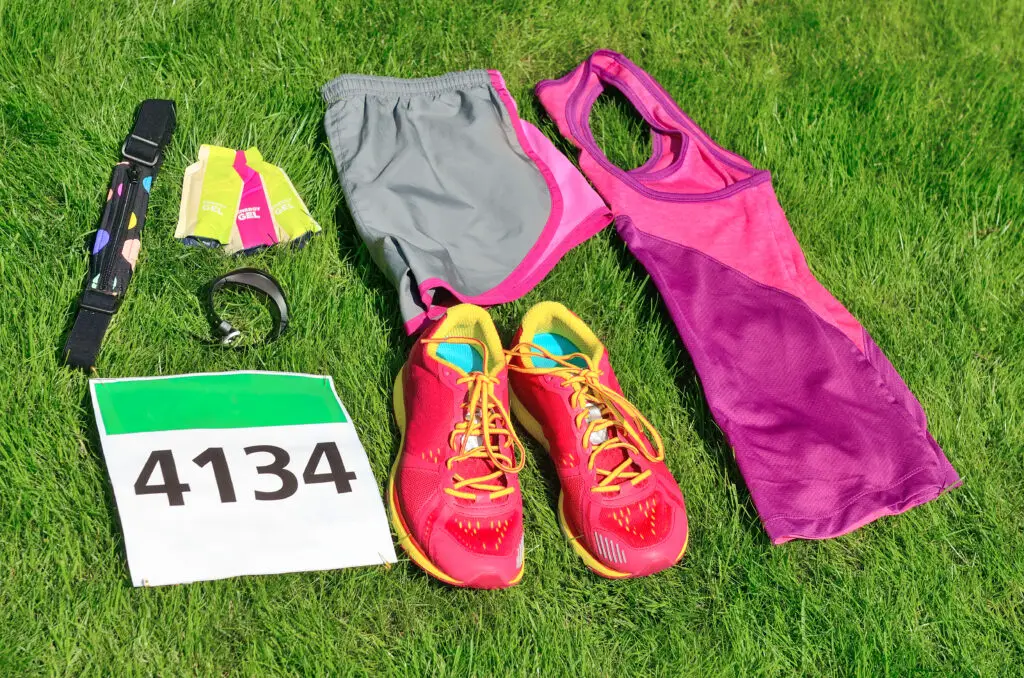
17+ Powerful Ways of The Science of Physical Fitness: A Transformative Guide
Safety in Physical Fitness
Preventing Exercise-Related Injuries
Injuries can be a setback on your fitness journey, leading to pain, frustration, and potential interruptions in your routine. Here are some valuable tips and precautions to prevent common exercise-related injuries:
- Warm-Up Properly: A thorough warm-up prepares your muscles and joints for exercise. It includes light cardio, dynamic stretches, and mobility exercises.
- Use Proper Form: Ensure you use the correct form and technique when performing exercises. Poor form can lead to injuries and impede progress.
- Gradual Progression: Avoid overexertion by gradually increasing the intensity and duration of your workouts.
- Balance Strength Training: Work on balanced muscle development. Neglecting certain muscle groups can lead to muscle imbalances and injury.
- Listen to Your Body: Pay attention to signs of discomfort or pain. Ignoring pain can worsen injuries.
- Rest and Recovery: Allow adequate time for recovery between workouts. Overtraining can lead to fatigue and injuries.
- Stretch Regularly: Incorporate static and dynamic stretching into your routine to maintain flexibility and reduce the risk of muscle strains.
- Stay Hydrated: Dehydration can affect your performance and increase the risk of cramps and muscle strains.
- Proper Footwear: Ensure you’re wearing appropriate shoes for your activities to prevent foot and ankle injuries.
- Warm Down: Conclude your workouts with a proper cool-down that includes static stretching to relax your muscles.
- Use Protective Gear: If your activity requires it, such as cycling, skating, or contact sports, wear protective gear like helmets, knee pads, and helmets.
- Cross-Training: Incorporate a variety of exercises into your routine to prevent overuse injuries from repetitive motions.
First Aid and Basic Injury Management
Despite precautions, accidents can happen during physical fitness activities. Basic knowledge of first aid and injury management is valuable. Here are some fundamental first aid techniques:
- Cuts and Scrapes: Clean the wound with soap and water. Apply antiseptic to the wound and then cover it with a clean, sterile bandage.
- Sprains and Strains: Use the R.I.C.E. (Rest, Ice, Compression, Elevation) method. Rest the injured area, apply ice, compress with a bandage, and elevate it.
- Bruises: Apply a cold compress to the bruised area to reduce swelling and pain.
- Fractures and Dislocations: Do not attempt to set or realign bones. Immobilize the injured area and seek immediate medical attention.
- Heat-Related Illnesses: In cases of heat exhaustion or heat stroke, move the individual to a cooler place, provide fluids, and seek medical help if necessary.
- Cold-Related Injuries: In cases of hypothermia or frostbite, warm the person gradually without rubbing the affected area. Seek medical attention.
- Allergic Reactions: If someone experiences an allergic reaction to stings, bites, or food, administer an epinephrine auto-injector if available and seek immediate medical help.
- Cardiopulmonary Resuscitation (CPR): Learning CPR can be invaluable in emergencies.

Conclusion:
17+ Powerful Ways of The Science of Physical Fitness: A Transformative Guide
In conclusion, physical fitness is a journey that extends far beyond the desire to look good; it encompasses the pursuit of health, well-being, and the development of a resilient body and mind. Throughout this article, we’ve explored various facets of physical fitness, from its essential components to the importance of nutrition, exercise variety, and the benefits of online fitness communities.
Physical fitness isn’t just about physical prowess; it’s about setting and achieving personal goals, overcoming plateaus, and continually challenging oneself. It’s about maintaining a healthy weight, managing chronic conditions, and finding motivation even when the going gets tough. It’s about embracing a diverse range of activities, from traditional workouts to sports, and reaping the benefits of each.
Moreover, physical fitness extends beyond individual pursuits. It encompasses the importance of community, where individuals come together to support, motivate, and learn from one another. Online fitness communities offer a digital space for connection, growth, and camaraderie.
To truly harness the power of physical fitness, it’s essential to choose the right exercise routine tailored to your goals and individual needs. Whether you’re building a home gym, utilizing wearable fitness tech, or selecting workout apparel and footwear, your choices impact your performance, comfort, and safety.
Remember that safety is paramount in physical fitness. Taking precautions, warming up properly, using proper form, and listening to your body can help prevent injuries. In the unfortunate event of an injury, basic knowledge of first aid and injury management can make a significant difference.
In your physical fitness journey, strive for balance, consistency, and enjoyment. Celebrate your achievements, no matter how small, and remember that progress may come in fits and starts. With patience and dedication, you can achieve your fitness goals and experience the many physical and mental benefits that a healthy and active lifestyle offers.
So, whether you’re a seasoned fitness enthusiast or just starting on your path to physical well-being, keep moving, keep learning, and keep pushing your boundaries. Your journey to physical fitness is a lifelong adventure filled with rewards, challenges, and a stronger, healthier you.
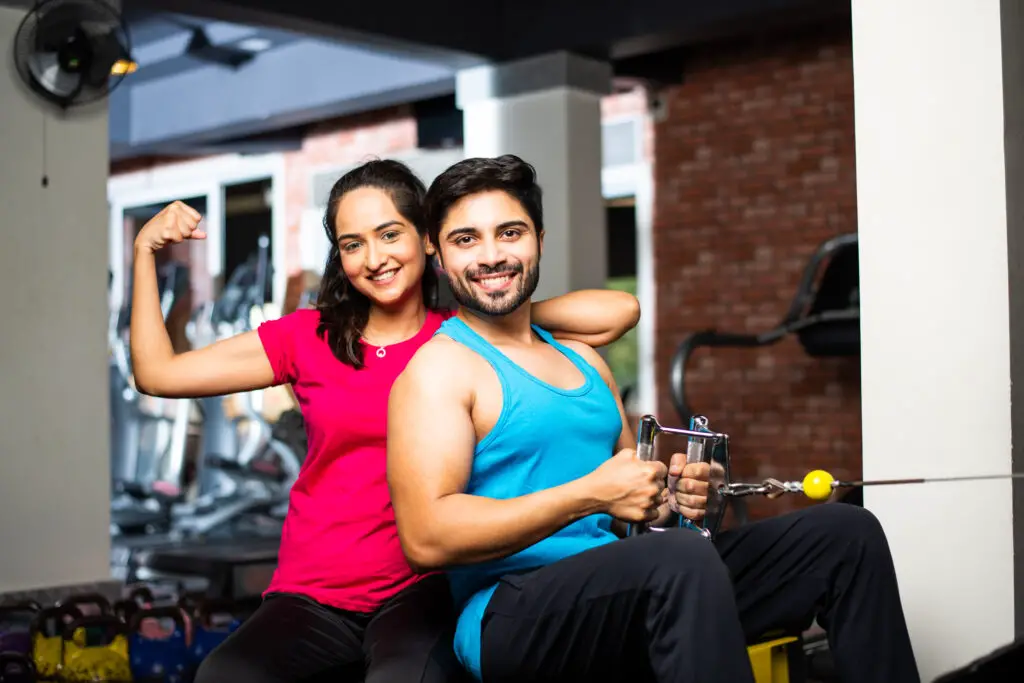
Frequently Asked Questions (FAQs):
17+ Powerful Ways of The Science of Physical Fitness: A Transformative Guide
- What is physical fitness?
Physical fitness refers to the overall state of well-being and health achieved through regular physical activity and exercise. It includes a range of elements such as cardiovascular endurance, muscular strength, muscle endurance, flexibility, and body composition. - Why is physical fitness important?
Physical fitness is vital for maintaining good health, preventing chronic diseases, improving overall quality of life, and enhancing mental well-being. It also supports weight management, boosts energy levels, and increases longevity. - What are the key components of physical fitness?
The key components of physical fitness include cardiovascular endurance, muscular strength, muscular endurance, flexibility, and body composition. These elements collectively contribute to overall fitness and well-being. - How often should I exercise to maintain physical fitness?
How often you exercise should be determined by your specific fitness goals. In general, it’s advised to participate in a minimum of 150 minutes of moderate-intensity aerobic activity or 75 minutes of vigorous-intensity aerobic activity every week. Additionally, include muscle-strengthening exercises on at least two days per week. - Is it possible to attain physical fitness without going to a gym?
Yes, you can achieve physical fitness without going to a gym. There are numerous activities you can do at home or in your community, such as walking, jogging, cycling, bodyweight exercises, yoga, and more. A home gym with basic equipment can also be an option. - What role does nutrition play in physical fitness?
Nutrition is a crucial aspect of physical fitness. A balanced diet provides the necessary energy and nutrients to support your workouts and overall health. Proper nutrition is essential for weight management, muscle recovery, and optimal performance. - How do I stay motivated on my fitness journey?
Staying motivated on your fitness journey can be achieved by setting clear and achievable goals, tracking your progress, rewarding yourself for accomplishments, finding a workout buddy, and maintaining variety in your exercise routine. - What are the benefits of online fitness communities?
Online fitness communities offer a platform for individuals to connect, share experiences, seek advice, and find motivation. They provide a sense of belonging and support, as well as access to valuable resources and information. - How can I overcome weight loss plateaus?
To overcome weight loss plateaus, you can change your workout routine, make dietary adjustments, consult a professional for guidance, and set new, achievable fitness goals. Plateaus are common, but with the right approach, you can push through them. - Why is intrinsic motivation important in physical fitness?
Intrinsic motivation is important because it comes from within, providing a sustainable drive to maintain your fitness journey. It offers resilience, engagement, and long-term success, making your fitness goals more meaningful and enduring. - How can I cultivate intrinsic motivation for fitness?
You can cultivate intrinsic motivation by aligning your fitness goals with your personal values and broader life goals. Choosing activities you genuinely enjoy, finding a supportive community, and focusing on health and well-being can also enhance intrinsic motivation. - Is it possible to maintain a lifelong commitment to physical fitness?
Yes, it is possible to maintain a lifelong commitment to physical fitness. With the right mindset, goals, and motivation, fitness can become a sustainable part of your lifestyle, promoting good health and overall well-being throughout your life.
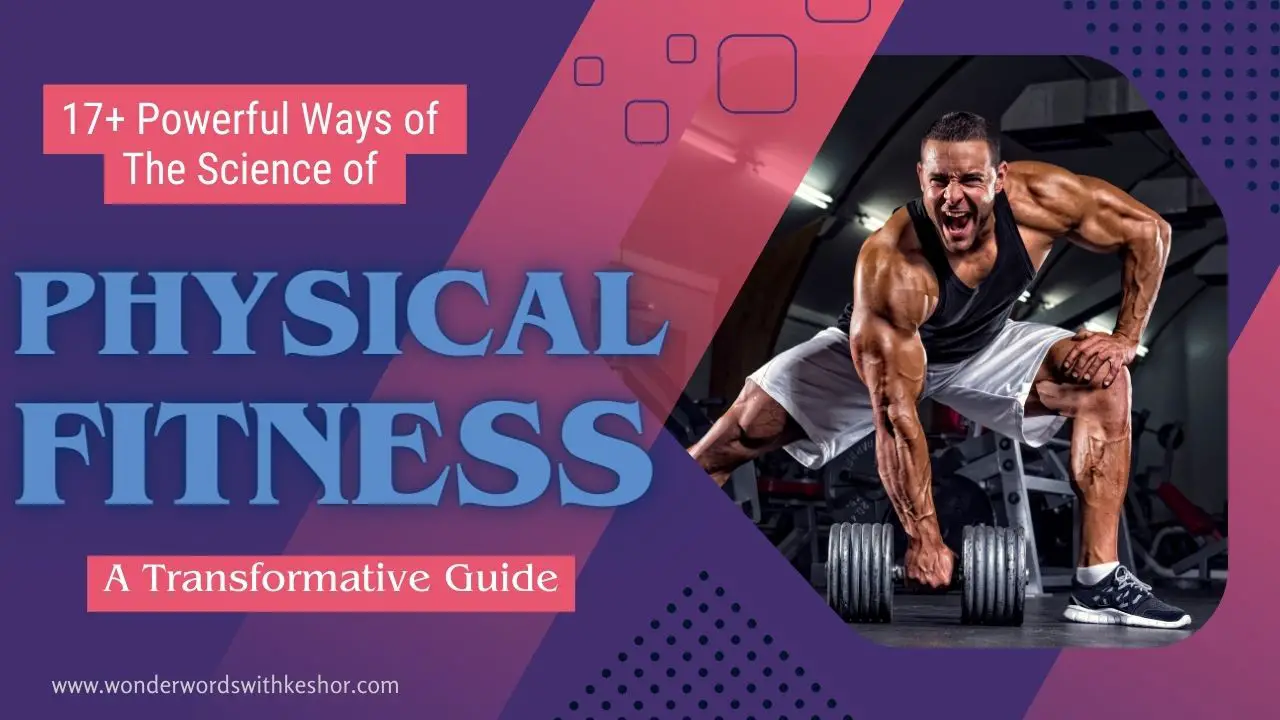

3 thoughts on “17+ Powerful Ways of The Science of Physical Fitness: A Transformative Guide”